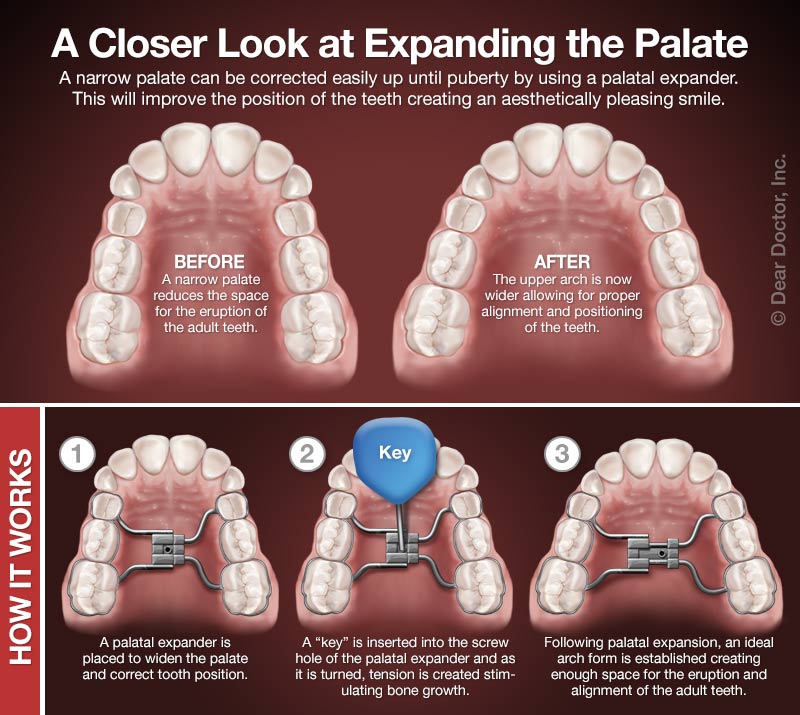
A significant benefit of receiving orthodontic treatment in childhood is that it’s possible to take full advantage of a youngster’s own natural growth process to treat or even prevent malocclusions (“bad bites”). A palatal expander is a device designed to help us do that.
Palatal expanders, a common tool in orthodontic treatment, work by gradually widening the upper jaw, creating more space in a child’s mouth. Despite its initial impression, the process is surprisingly easy and well-tolerated. This is because the upper jaw (maxilla) develops as two separate halves that don’t fully fuse until after puberty. This allows for gentle separation and stabilization of the two bones over a period of several months.
The three situations that most commonly call for maxillary expansion are:
When a child’s upper jaw is too narrow to fit correctly with the lower jaw, the back top teeth will bite inside the lower teeth instead of outside. Expanding the upper jaw can correct this.
Even before all of a child’s permanent (adult) teeth come in, we can tell when there will not be enough room to accommodate them. Widening the upper jaw can create the necessary space without the need for tooth extractions.
When a tooth hasn’t come in (erupted) yet because it is blocked by other teeth, widening the upper jaw can allow it to erupt into the proper position on its own. This often happens with canine or eye teeth — the pointier ones located directly under the eyes.
How Expanders Work
An expander is custom-made for each individual and fits over several top teeth in the back of the mouth. The appliance has two halves that are connected in the middle with a screw. To activate the device, you turn the screw a very small amount each day with a special key. This induces tension at the junction of the two palatal bones, causing them to move apart gradually. Once the desired expansion is achieved, we will leave the appliance in for a few more months to allow new bone to form in the gap and stabilize the expansion. Generally, expanders are worn for 3-6 months altogether.
Effects of Expanders
There can be some soreness or a feeling of pressure for a few minutes after the key is turned, but activating an expander actually causes less discomfort than having braces tightened. Your child may find that speaking and eating feels different initially as the tongue adjusts to the appliance’s presence. It is also completely normal to see a gap develop between the front teeth. This shows that the expander is having the desired effect. When all is said and done, your child’s permanent teeth will be beautifully aligned with neither too much nor too little space between them.
